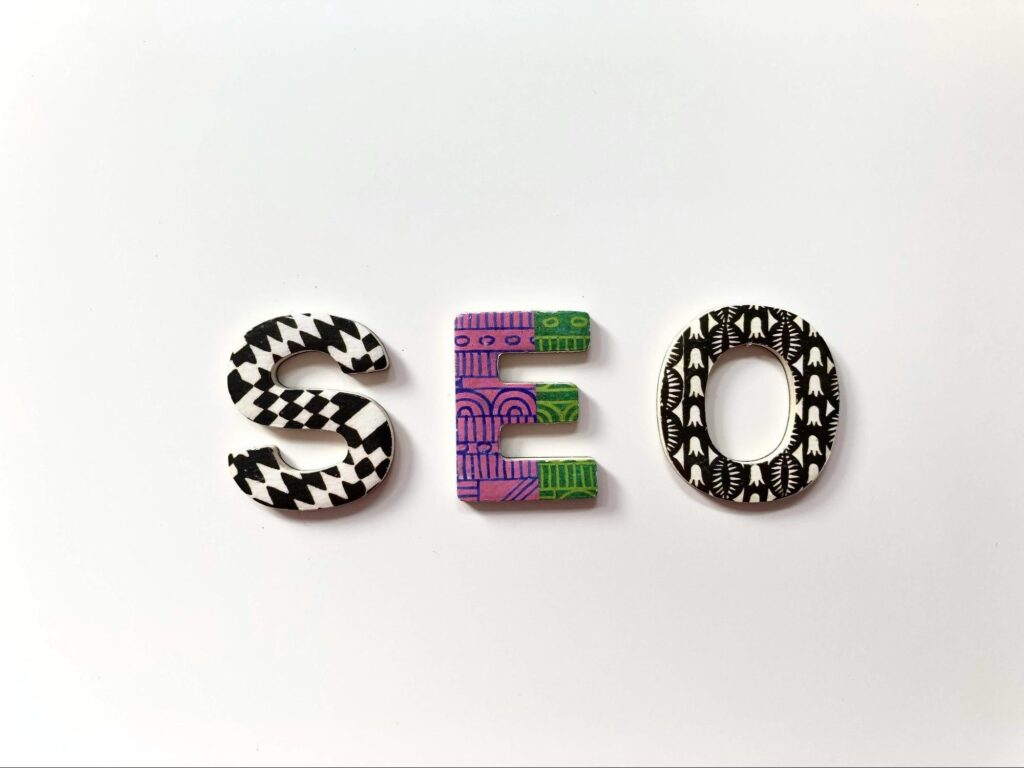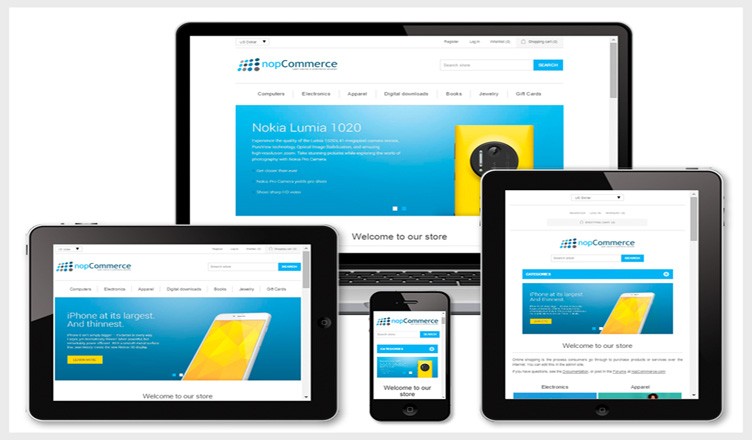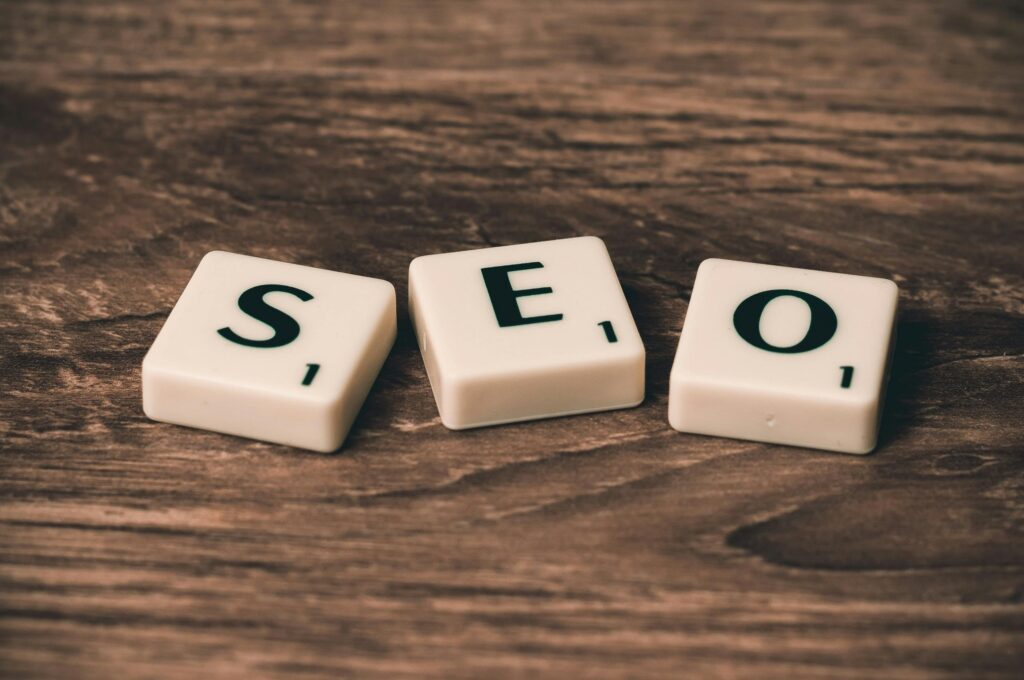E-commerce marketing is no longer a luxury in the digital age, but a necessity.
To succeed in the online marketplaces, companies need to use e-commerce marketing. What exactly is e-commerce marketing?
It means driving people to your online store using promotional tactics and converting this traffic into paying customers while retaining them after purchase
A successful e-commerce strategy for marketing will make your business stand out from other businesses in the crowded online marketplace. It can help you attract more customers, increase sales and foster customer loyalty..

But creating an effectual e-commerce strategy for marketing is not easy. This requires deep knowledge of one’s target audience, keeping up with trends and being open to change through experiments.
We will be discussing all aspects of eCommerce Marketing Magic in this guide. The strategies that can drive sustainable business development will be explored here.
The guide contains actionable insights and tips that you can apply right away whether you are an eCommerce business owner, a digital marketer or an entrepreneur.
Starting from ecommerce marketing basics to latest trends & technologies we have everything covered. There are SEO, content marketing, email marketing, social media advertising etc., among other topics discussed during our study session today.
We also have some practical guidance on improving user experience on your website; leveraging data; personalizing your messages; and building communities around brands
You will understand how to create an effective eCommerce marketing strategy that wins by the end of this guide. You will learn everything it takes to take your enterprise to new heights once you are done reading this piece.
Are you ready then? Let us begin!
Understanding eCommerce Marketing Your Attractive Heading
eCommerce advertising encompasses various techniques used to engage, attract and convert online shoppers.
In its essence, eCommerce promotion involves comprehending what consumers want and need as well as ensuring shopping experience remains flawless at each stage of interaction with clients.

Some key areas that are covered in eCommerce marketing include:
SEO (Search Engine Optimization): This refers to the process of optimizing your website and product pages to appear higher in search engine rankings so as it can attract organic traffic.
Content Marketing: This involves the creation and distribution of valuable content that should attract, engage or nudge prospective customers to take action. The aim is for your brand to become a trusted source in the area of your specialization.
Email Marketing: It is a way to keep promoting products through email and nurturing relationships with customers while encouraging repeat purchases and loyalty.
Social Media Marketing: It’s all about using channels like facebook, Instagram, pinterest among others in order to connect with followers, establish your brand and generate leads. Ultimately, it helps increase brand visibility as well as stimulate customer engagement.
PPC (Pay-Per-Click) Advertising: this strategy makes use of paid ads driving traffic on your site. The idea behind this is raising awareness about one’s business together with attracting potential clients who are actively searching for similar goods or services on the internet.
The Role of eCommerce Marketing in Business Success
E-commerce marketing plays an essential role in today’s digital world; it is a driver for online sales growth.
Your online store is like a ship without a rudder if it does not have a solid eCommerce marketing strategy. It’s simply drifting purposelessly in the vast ocean of internet.
To get you to customers with whom you can connect, build relationships and convert them into loyal customers.
eCommerce marketing in fact is more than just selling products. It is about creating outstanding experiences for customers that will keep them coming back for more.
Defining Your eCommerce Marketing Strategy
Defining your e-commerce marketing strategy is an important first step. By doing so, you are able to set the direction for your marketing efforts as well as ensure that you remain focused on your goals.
Your ecommerce marketing strategy should be based on a clear understanding of your target audience.. Who they are? What do they need and want? How can our products solve their problems or enhance their lives?
Once you have identified the niche market, one can start creating messages for advertising. Such messages must elicit feelings from the target market and make them act accordingly.
In addition, your eCommerce marketing strategy needs to comprise diverse channels of promotion. Each channel has its own peculiarities which will help approach your target group differently.
Lastly, an effective e-commerce marketing plan should allow flexibility. This implies that trends are constantly shifting in digital realms necessitating adjustments in strategies adopted by firms operating there. Be willing and ready to change directions when necessary if you want to win the game.
Pillars of Ecommerce Marketing
Several pillars hold up e-commerce marketing. Each pillar represents some aspect of your overall marketing mix or plan – together they form the basis of all ecommerce promotional activities undertaken by any company.
Search Engine Optimization (SEO) is one such pillar. SEO refers to making website pages visible at higher positions within search engine results pages. This means driving organic traffic to one’s site online
Content Marketing forms another supporting pillar, involving creation and sharing valuable content connecting with target clients; this confirms the brand as a reliable source of information within one’s chosen niche.
The last pillar is Email Marketing. This involves sending out emails to promote your products and maintain customer relationships that would encourage repeat purchases and customer loyalty.
Search Engine Optimization (SEO)
E-commerce marketing is incomplete without Search Engine Optimization (SEO). This refers to optimizing your website pages and other online content in order for them to rank highly in search engine results page (SERP). The main aim here is to attract organic traffic into the site through this approach.

The following are some of the key elements involved in SEO:
Keyword Research: It means identifying keywords which potential consumers use when searching for goods or services such as the ones you sell. These keywords must be included in the content of your website, product descriptions and meta tags.
On-Page SEO: This process includes modifying web pages’ HTML source code and content. It includes adding relevant keywords within page copy, optimizing title tags and meta descriptions as well as using header tags for organizing content.
Off-Page SEO: In contrast, off-page SEO is all about what happens away from your website so as to improve search engine rankings. This entails building quality backlinks, promoting one’s content on social media platforms or requesting customers to give comments about their experience usibg our product(s).
Technical SEO: Last but not least technical SEO deals with improving how search engines see your site by making changes behind the scenes. These include enhancing site speed, ensuring mobile-friendly design as well as creation of XML sitemap.
Content Marketing
Content marketing is another important pillar in eCommerce marketing where it involves creating and sharing valuable content that your target audience can relate with. This is so as to come up as an expert in the niche and also build trust with the customers.

Content marketing involves several key elements:
- Blog Posts: Blog posts are a great way to share your expertise, provide valuable information, and engage with your audience. They can also help improve your SEO by incorporating relevant keywords and providing fresh content for search engines to index.
- Videos: Videos are a powerful way to showcase your products, demonstrate how they work, and engage with your audience. They can be shared on your website, social media platforms, and YouTube.
- Infographics: Infographics are a visually appealing way to present complex information in a simple and digestible format. They can be used to explain how your products work, share industry statistics, or illustrate a process.
- eBooks and Guides: eBooks and guides are a great way to provide in-depth information on a specific topic. They can be used as a lead magnet to grow your email list or as a value-added resource for your customer
Email Marketing
E-commerce businesses use email marketing because they know its potential. It enables you have direct access into your customers’ inbox so that you may promote your products as well as develop relationships.
An effective email-marketing plan contains several components; first, one has got to construct an email list of existing consumers along with prospective clients who might want what he/she has on sale. This could involve using lead magnets, web page sign-up forms, checkout opt-ins etc.
Afterwards there is need for one to separate his/her list depending on customer actions, hobbies plus acquisition history thus allowing an individual send out particular emails that will appeal these segments.
Finally you’ve got compose engaging e-mails that will grab attention from those targeted audiences including promotional messages newsletters transactional recommendation personalization etc.
Social Media Marketing
In social media marketing, it means that you use platforms like Facebook and Twitter to connect with your audience and build traffic for your website. This helps bring more people into the public eye about the brand you’re promoting; through this you will be able to interact with customers and sell your products.
To have an effective social media marketing strategy, select the most suitable platform for your brand, create engaging content and engage with users in order to generate leads. Monitoring the performance of your social media while adjusting one’s plan is also crucial.
Pay-Per-Click (PPC) Advertising
Pay per click advertising involves paying a fee each time someone clicks on one of your ads online. Instead of relying on organic methods to gain visits, PPC advertisements are a way to purchase them in bulk.
PPC advertising could be a cost-effective way of directing traffic towards a site particularly if you target keywords with high intent. It enables one reach potential clients who specifically look for products similar to those ones offered by yourself.
A well-executed PPC campaign consists of keyword research, ad creation, landing page optimization and bid management. Additionally keeping track of how the campaign goes is very important because there may be times when adjustments need making.
Enhancing User Experience for Better Conversion
User experience is essential in e-commerce marketing. Its objective is to produce an unparalleled easy shopping experience for customers. When user experience is positive, conversion rates tend to rise along with customer loyalty.
Mobile optimization is the first step in increasing user experience. It’s a must to have a mobile friendly website due to more and more people using their mobile devices for shopping. This means ensuring responsive design, which will suit different screen sizes together with an easy navigation system.
The next thing that you need to do is optimizing your product pages for conversion. You can do this by creating compelling product descriptions, using high resolution images, and making it easy for customers to buy.
Last but not least, you need to make your checkout process seamless. A difficult or lengthy checkout process can result in cart abandonment. By simplifying things and giving customers several alternative payment methods, you are able to improve conversions.
Mobile Optimization: Capturing the Mobile Shopper
For E-commerce companies, mobile optimization is critical. Gone are the days when having a mobile-friendly website was optional because of the rise in mobile shopping. It’s now become a matter of necessity.

A mobile-friendly website is one that looks good on mobile devices and also works fine on them. There should be flexibility so that it can adapt itself according to varying screen sizes while reading text is simple; buttons being clickable easily as well as navigating through its pages comfortably are other factors.
Besides responsiveness another way of making a website friendly to the phones is through quick loading speeds. Slow load times may annoy users who may then bounce quickly away from your site—optimizing images, employing Content Delivery Networks (CDNs), minimizing resource-intensive scripts among others are ways of speeding up loading times.
Another crucial element of mobile optimization entails the checkout process. The checkout process should be very simple with few number of steps involved in it hence filling out less fields at each stage. Other than that, customers should be allowed to use their Apple Pay or Google Pay services on the phone which improves their overall experience when shopping using the phone.
Optimizing Product Pages for Conversion
Your eCommerce website cannot be complete without product pages. They are important in determining whether a customer will buy your product or not. Therefore, you must optimize your product pages in order to improve the conversions.
A good optimized product page should have an attractive product description. This means it should explain what the product is about, its key features and benefits while answering any objections that may arise from customers. Also, this would help in search engine optimization if a few relevant keywords were included.
High quality images are also essential. Since customers can’t feel or examine a physical product, they have to rely on visual information provided by pictures only. Multiple images from different angles and sometimes videos help customers make up their mind on a purchase.
Besides, customer reviews and ratings can increase conversions as well because they provide social proof and help build trust among potential buyers who might be sceptical about purchasing your products online. You also need to encourage customers to leave reviews which would then appear prominently on every page of products you sell.
Finally, ensure that you have made your “Add to Cart” button clear enough for everyone else looking at it on the site because it ought to be very visible and easy for anyone interested in buying clicking on it.
Streamlining the Checkout Process
The checkout process is the final leg of the customer’s journey; there they finally make payment. However, barring complications or lengthy checkouts where clients might even abandon their carts altogether.
To streamline checkout process start by cutting down on steps involved during checkouts. The fewer steps required the better. If possible let your consumers fill out everything on one page through a single-page checkout system with all fields available at once.
Next up is removing irrelevant fill-in spaces that could hinder sales closing smoothly, thus ask only for information that is absolutely necessary otherwise each extra space becomes another barrier between them and checking out completely
Additionally, a variety of payment options can enhance the checkout process. However, customers have different preferences regarding payment methods. Thus, you should provide a range of choices to cater for everyone.
Lastly, assure your customers that their information is secure. Show them proof of security by displaying security badges and encrypting data with SSL certificate to win their confidence. This will help in creating trust hence increased conversion rate.
Data Driven Personalization
In ecommerce marketing landscape information is power. It helps to understand the behavior, interests and needs of your customers. By doing this one can personalize the e-commerce experience based on it which will resonate with users best.
Personalization involves tailoring messages and campaigns to suit individual clients’ preferences. It’s about making them feel that you know what they need and are capable of providing it. As a result this may lead to higher customer engagement rates and sales conversions leading to customer loyalty.
However personalization means that you must know your audience intimately well. This is where customer data comes in handy as an important resource while acquiring insights on shopping behaviors, preferences or unmet requirements for services or products.
Using these insights then one can design personalized marketing campaigns that specifically target individuals or groups of individuals who share similar characteristics.
Customer Data for Personalized Experiences
Customer data has a lot of useful information in it including: who are they? What do they like? How do they shop? Use this knowledge to create unique experiences that resonate with these customers.
There are numerous ways through which customer data can be collected from; browsing behavior tracking done via cookies; collection through surveys gathering opinions; storage by using CRM systems and social media analytics providing insight into interest areas and preferences.
Once you have the data, you need to analyze it critically so as to get patterns and trends which explain why customers behave the way they do. For instance, some products may be popular among certain groups while others choose specific times during the day to shop.
Using these inputs, marketing campaigns can be personalized. For example, you can send targeted emails with product recommendations based on a customer’s purchase history. Or you can display personalized ads based on their browsing behavior.
However, remember that personalization does not only focus on making a sell. It is also about building relationships. By showing your customers that you understand what they want and like best, it becomes possible for them to trust you and stay loyal.

A/B Testing and Analytics for Optimization
A/B testing and analytics are effective optimization tools. They let you examine the performance of various versions of your marketing materials. Such tools enable marketers to make informed choices hence continuously improve their marketing initiatives.
This means creating two versions of a marketing material such as a landing page or email, and then comparing them. The better version is selected in this way. In contrast to assumptions, this approach allows marketers to optimize based on actual data.
On the other hand, analytics shows how your marketing efforts align with your goals since it encompasses indicators such as conversions rate over time for campaigns or channels generating the most traffic . These statistics will provide insights into areas where improvements should be undertaken and facilitate decision-making process thereby informing any corrective actions needed.
Take for example if your analytics show that your email open rates are low, you might decide to test different subject lines. Alternatively, if your conversion rates are low, you could consider trying out different call-to-action buttons.
Optimization is an ongoing process. It is about testing, analyzing and improving things all the time. A/B testing and analytics can be used together to ensure that e-commerce marketing is always at its best.
Building a Brand Community
Creating a brand community around your brand is a powerful way of marketing in eCommerce. This means offering your customers a sense of belonging. It means making them think that they are part of something beyond just purchases.
A strong brand community can lead to increased customer loyalty, word-of-mouth marketing and even co-creation of products. You can turn your customers into brand advocates that act as promoters actively for what you sell or provide.
This involves consistent engagement with clients so as to build a brand community. Involving in social media interactions, emails newsletters or even organizing for physical events can achieve this goal. The aim is to bring together your consumers with the aim of having them interact with both the business as well as other consumers.
It’s not just about selling when it comes to building this kind of group; it’s about providing value and building relationships with your customers which go beyond their wallets only.
Engaging with Customers via Social Proof
Social proofing helps in building trust and credibility among people. It’s about showing potential buyers that others have faith in & like the name of their company through customer reviews , testimonials or user generated content created by brands’ loyal users themselves.
Customer reviews & testimonials from former buyers who recount their experiences serve as an instance here since they tell prospective clients that others have already had good times using this product where there was any question marks.
User-generated content such as photos or videos of people using these products may act as social proof too by displaying how those items look like and perform in reality. It is also a means of showing them that someone else likes their product.
Another way to do this is run contests, or even incentivize user-generated content that includes reviews by your customers on social media platforms. This demonstrates that a brand is trustworthy if it has more social proof.

Creating a Loyalty Program
A loyalty program can be a great way to thank your clients for sticking with you. It’s about demonstrating to them that you recognize their business and would like to offer something back in return.
An effective loyalty program can increase customer retention, encourage repeat purchases, and even attract new customers. It will make your one-time buyers become the loyal ones who continue buying from you all the time.
Loyalty programs have many designs. For instance, you may choose to give out points following every purchase; alternatively, discounts for returning clients as well as some special privileges for your most committed customers only. The idea is to make sure that these people feel appreciated and recognized.
Future-Proofing Your E-commerce Marketing
The world of e-commerce marketing is an ever-changing one. There are constantly emerging technologies, trends and customer behaviours that sprout out. Therefore, the only way to remain competitive is by future-proofing your e-commerce marketing strategy.
This means anticipating change and adjusting your strategy accordingly. It means staying ahead of the game as new opportunities arise. It means being able to keep your e-commerce business relevant and competitive in the long run.
That does not mean every new trend or technology should be followed blindly though. You would rather assess each of them keenly in order to determine if they have the potential to affect your business or not. They are made with regard to strategic decisions which satisfy businesses goals and customer needs.
In these parts we will find how adopting upcoming technologies can help us see ahead using eCommerce marketing trends. Understanding this insight will make your eCommerce marketing strategies future-proof leading to sustainable business growth.
Embracing Emerging Technologies
Emerging technologies are reshaping the face of e-commerce today. Whether artificial intelligence (AI) or augmented reality (AR), these technologies provide great opportunities for e-commerce marketing.
Artificial Intelligence can enable personalized shopping experience while predicting customers’ behavior, optimizing your marketing campaigns among others targeting messages at customers when they need them most.
Augmented Reality could facilitate product visualization during online purchases making it more interactive as well. This helps customers make informed purchase decision hence reducing return rates and increasing satisfaction levels among consumers.

Blockchain technology can enhance transparency and security, building trust with your customers; streamline payment processes dandifferent ways such as Blockchain can speed up transaction times making them more efficient than before.
Voice Technology has changed how consumers search for products and interact with brands completely; hence optimization for voice search enables you increase sales by reaching more customers even if it is through smart speakers era.
Embracing these technologies can give you a competitive advantage and help you deliver a better shopping experience. However, technology should not dictate your strategy; it should serve it. Therefore, whenever you decide to bring in new techs, always consider your business goals and the needs of your customership.
Staying Ahead with eCommerce Marketing Trends
Keeping up with the trends in e-commerce marketing is what will save your company from getting outdated in future. It’s about knowing where the industry is going and preparing yourself for any opportunities to come.
One of them includes omnichannel marketing which has become popular nowadays as customers are using different channels to interact with brands and they expect an integrated experience across all platforms. All this can be achieved through a good omnichannel strategy that meets their expectations providing a uniform brand image.
Sustainability is a growing trend, with consumers increasingly drawn to brands that align with their values and contribute positively to a sustainable future. By incorporating sustainability our e-commerce digital marketing services, you can attract these ethically aware consumers to your site. This could involve crafting compelling content that highlights your sustainable practices, partnering with eco-conscious influencers, or leveraging targeted advertising that emphasizes your commitment to environmental responsibility.
Personalization still remains one of the main trends desired; whereby clients require individual approach because their preferences differ from one person to another. To do this data must be used along artificial intelligence (AI) so that companies can build stronger customer relationship while offering them more personalized experiences.
Doing this keeps you on top of the game thereby giving you an edge over other businesses leading to long-term growth. But note that, not all trends may fit well into your business model; always consider business goals and customer needs before trying out new ones for example when adopting new fads in fashion industry.
Summary: Creating an e-Commerce Marketing Plan
Creating a good e-commerce marketing plan is not an easy task. You should have an in-depth knowledge of your business, the customers and the online platform that has developed for business transactions. You need to think strategically, be innovative and flexible.
An all-inclusive e-commerce marketing strategy should address every aspect of your online presence. It must be consistent with your company’s goals and meet the demands of your clients. The application of data and technology to provide customized experiences that induce conversions.
However, one thing you should keep in mind is that it is only as good as executed. Efficient execution of this strategy while keeping a close look at how it performs is very important. Keep track of progress through analytics and make informed decisions based on statistics. This would mean that you are open to changing the strategy depending on results achieved under changing market circumstances.
Lastly, make sure you future-proof your strategy. Be ahead of eCommerce marketing trends and embrace new technologies. This secures competitiveness for your eCommerce firm for sustainable growth.
Recapitulation of Main Strategies
This guide has covered various strategies in eCommerce marketing. These strategies will help you acquire, engage and convert visitors into customers from SEO and content marketing through personalization by data among other emerging technologies.
The significance of user-experience, community building, and making sure our methods are future-oriented have been underscored here too. All these factors play a crucial role in developing a holistic as well as effective E-commerce marketing plan.
Next Steps For E-Marketers
- E-Commerce Marketing Secrets: How Delhi NCR Best Digital Marketing Company Can Transform Your Business
- E-Commerce SEO and its Best Practices in 2024
- SEO for Fashion Ecommerce: 7 Best Fashion SEO Strategies in 2024
- All about ecommerce and its purpose
- All about ecommerce and its purpose
With these strategies now in place it’s time to implement them yourself; begin by going over current digital commerce advertisement plan; identify areas where strengths were experienced or weakness were identified during implementation
You can improve its quality by using knowledge from this manual. Look for strategic approaches which fit best with objectives you set previously while taking care about customer preferences simultaneously with their implementation within the context of your business. Keep monitoring your progress and changing the strategy where necessary.
Remember, e-commerce is a journey, not a destination. It involves continuous learning, testing and optimizing. However, you can achieve sustainable business growth with right strategies and customer centric approach. Good luck with your e-commerce marketing endeavor!






